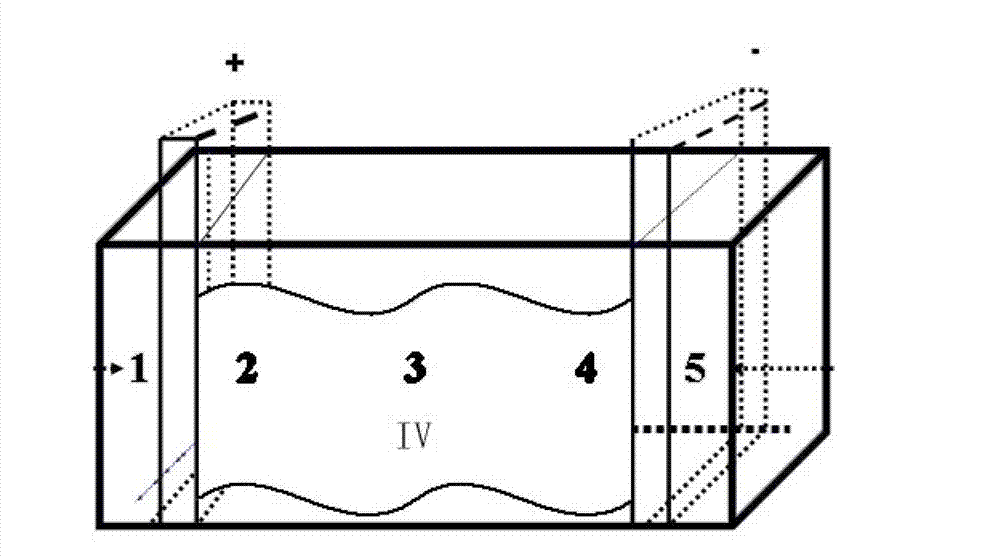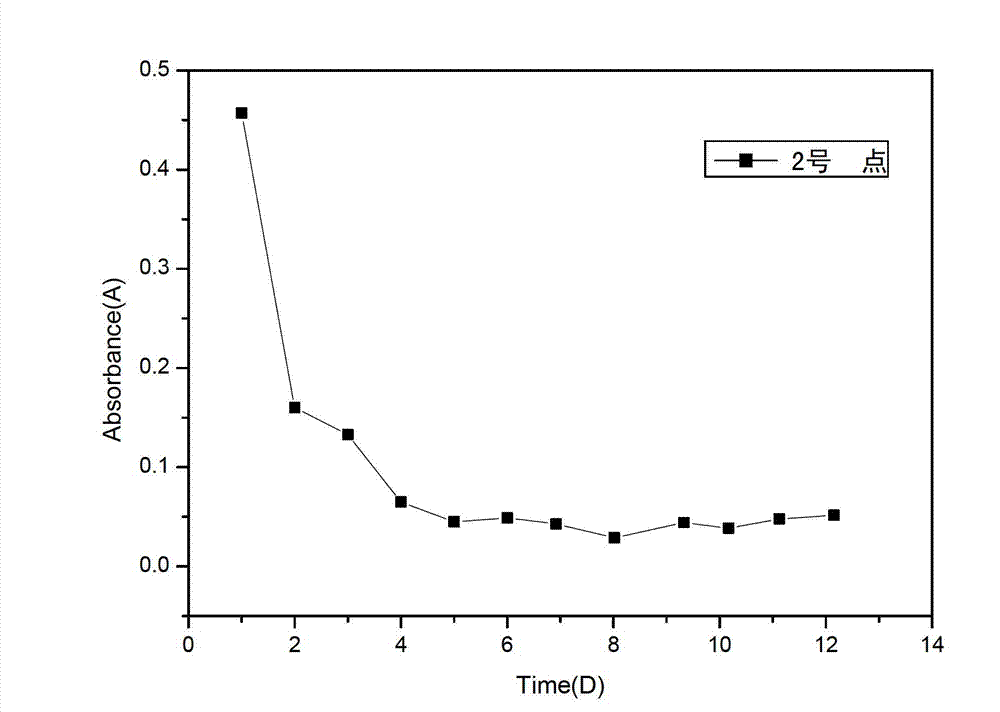Method and device for electrically recovering phenol-contaminated soil by using three-dimensional porous carbon electrode
An electric remediation, three-dimensional porous technology, which is applied in the field of remediation of organic-contaminated soil, can solve the problems of incompatibility, lack of flexibility, dead angle of electric field, etc., and achieve the effect of eliminating dead angle of electric restoration, realizing effective repair, and eliminating dead angle of electric field.
- Summary
- Abstract
- Description
- Claims
- Application Information
AI Technical Summary
Problems solved by technology
Method used
Image
Examples
Embodiment 1
[0053] Example 1 Use 2Kg of phenol with a concentration of 200mg / kg to simulate the soil, and add enough water to just submerge the soil, apply a constant voltage at room temperature, so that the potential gradient is 1.5V / cm, and last for 12 days, every other day at 1 , No. 2, 3, 4, and 5 sites were sampled to analyze their concentrations. Driven by the electric field, the water level in the anode area drops and the water level in the cathode area rises. Add 200ml of saturated Ca(OH) every 24h in the anode area from the next day 2 solution, neutralizes the generated hydrogen ions, and replenishes water. Collect the aqueous solution (about 200ml) in the cathode area, and add 200ml to the cathode area every 24h with a concentration of 5×10 -2 mol / L oxalic acid solution. The change curve of phenol concentration at each point with time is shown in Fig. 3 . It can be seen from the figure that the concentration of 3 sites (sites 2, 3, and 4) in the soil decreased signific...
Embodiment 2
[0054] Example 2 2Kg of phenol with a concentration of 100mg / kg was used to simulate the soil, and enough water was added to make it just submerge the soil, and a constant voltage was applied at room temperature to make the potential gradient 1.5V / cm for 12 days, and every other day at 1 , No. 2, 3, 4, and 5 sites were sampled to analyze their concentrations. Driven by the electric field, the water level in the anode area drops and the water level in the cathode area rises. Add 200ml of saturated Ca(OH) every 24h in the anode area from the next day 2 solution, neutralizes the generated hydrogen ions, and replenishes water. Collect the aqueous solution (about 200ml) in the cathode area, and add 200ml to the cathode area every 24h with a concentration of 5×10 -2 mol / L oxalic acid solution. Similar to Example 1, the concentrations of 3 sites (sites 2, 3, and 4) in the soil decreased significantly after 12 days, while the concentration of site 5 increased significantly. ...
Embodiment 3
[0055] Example 3 2Kg of phenol with a concentration of 300mg / kg was used to simulate the soil, and enough water was added to make it just submerge the soil, and a constant voltage was applied at room temperature, so that the potential gradient was 1.5V / cm, for 12 days, and every other day at 1 , No. 2, 3, 4, and 5 sites were sampled to analyze their concentrations. Driven by the electric field, the water level in the anode area drops and the water level in the cathode area rises. Add 200ml of saturated Ca(OH) every 24h in the anode area from the next day 2 solution, neutralizes the generated hydrogen ions, and replenishes water. Collect the aqueous solution (about 200ml) in the cathode area, and add 200ml to the cathode area every 24h with a concentration of 5×10 -2 mol / L oxalic acid solution. Similar to Example 1, the concentrations of 3 sites (sites 2, 3, and 4) in the soil decreased significantly after 12 days, while the concentration of site 5 increased significan...
PUM
 Login to View More
Login to View More Abstract
Description
Claims
Application Information
 Login to View More
Login to View More - R&D
- Intellectual Property
- Life Sciences
- Materials
- Tech Scout
- Unparalleled Data Quality
- Higher Quality Content
- 60% Fewer Hallucinations
Browse by: Latest US Patents, China's latest patents, Technical Efficacy Thesaurus, Application Domain, Technology Topic, Popular Technical Reports.
© 2025 PatSnap. All rights reserved.Legal|Privacy policy|Modern Slavery Act Transparency Statement|Sitemap|About US| Contact US: help@patsnap.com



